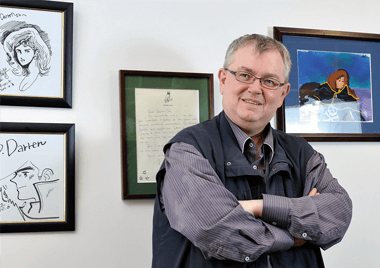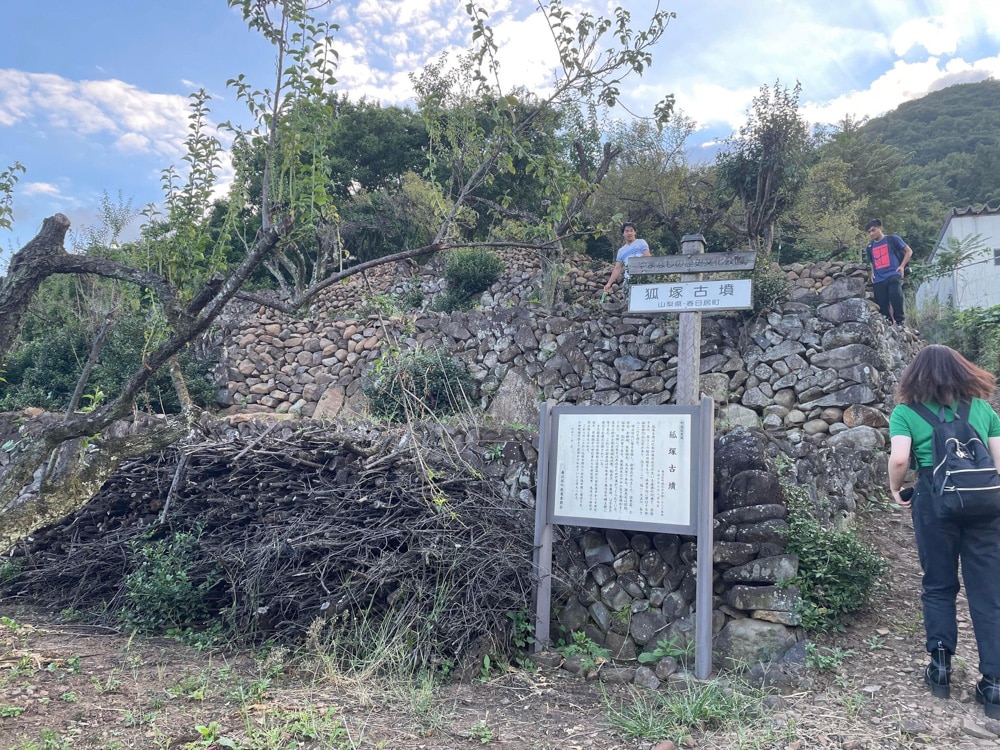
Each semester, the Folklore and Archeology of Yamanashi course led by Dr. Darren Ashmore conducts fieldwork in a variety of sites around Yamanashi. This semester’s class of 11 students are working on a site a short walk North of Isawa Onsen Station, where an middle Kofun Period (250CE – 700CE) burial mound of an unnamed ruler of the region is located. The tomb, known as the Kitsunezuka Tumulus (狐塚方墳) is notable for being a square shaped tomb known as hōfun, which is not as often seen as the keyhole-shaped kōfun.

Dr. Ashmore hopes that the project will highlight the archeological significance in the area and help our students get a better grasp on Yamanashi’s history, prior to the feudal era.
Lesser-known sites in Yamanashi often fall to disrepair from lack of interest and funding, and in some cases including the paths leading to the mounds, which make access to the sites a hurdle in itself. Perhaps if there is more awareness and interest in the archeological finds within the community, there could be more enthusiasm to preserve and study these sites further.
The Kitsunezuka site sits on privately owned farmland. Hundreds of pottery sherds have been found by the current landowner and previous generations of the same family, who have lived on the land for centuries. Some of these have been donated to the local Fuefuki City museum, but the university has been gifted a collection of such artifacts for cleaning and contextualizing. This has granted the students of Dr. Ashmore the opportunity to work with the past in an important way: putting dates and purposes back into the fragments which have come up from the soil. So far a small number of Jomon and Yayoi era sherds have been properly identified, with the bulk of remaining sherds being from the Kofun period. However, two Edo period plainware sherds seem to indicate the use of the land for interment for longer than initially expected.
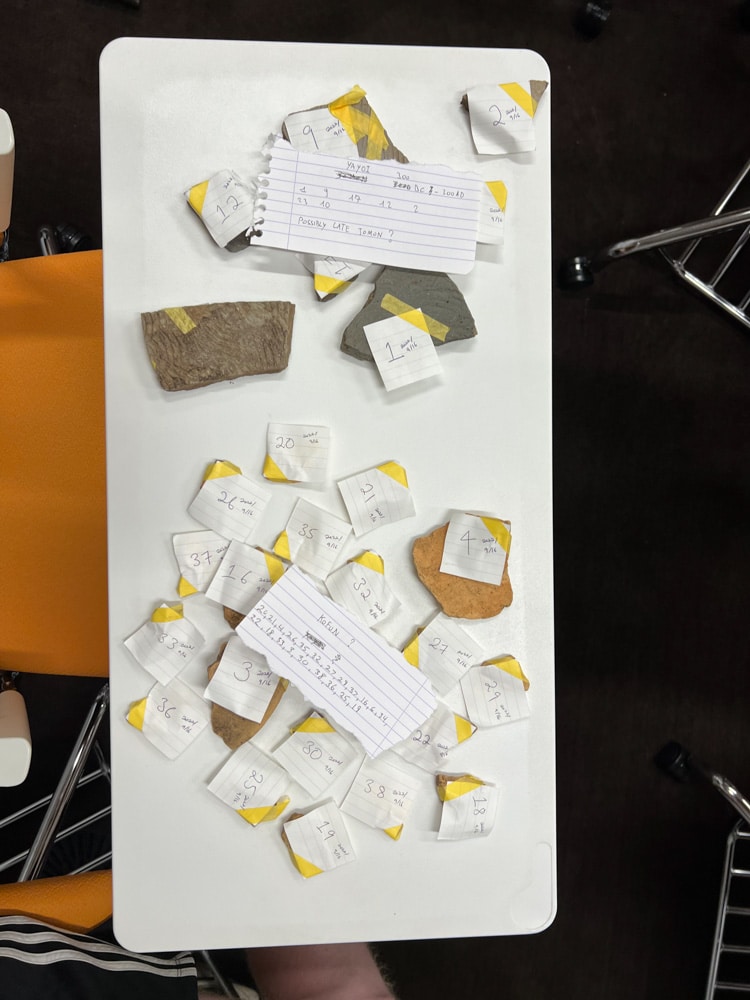
With permission from the landowners, the students have also been examining the tomb chamber itself. Though students may not enter into the tomb, as there is no stone sealing the chamber the class has been able to use an array of range finders to map the tomb interior as fully as they can.
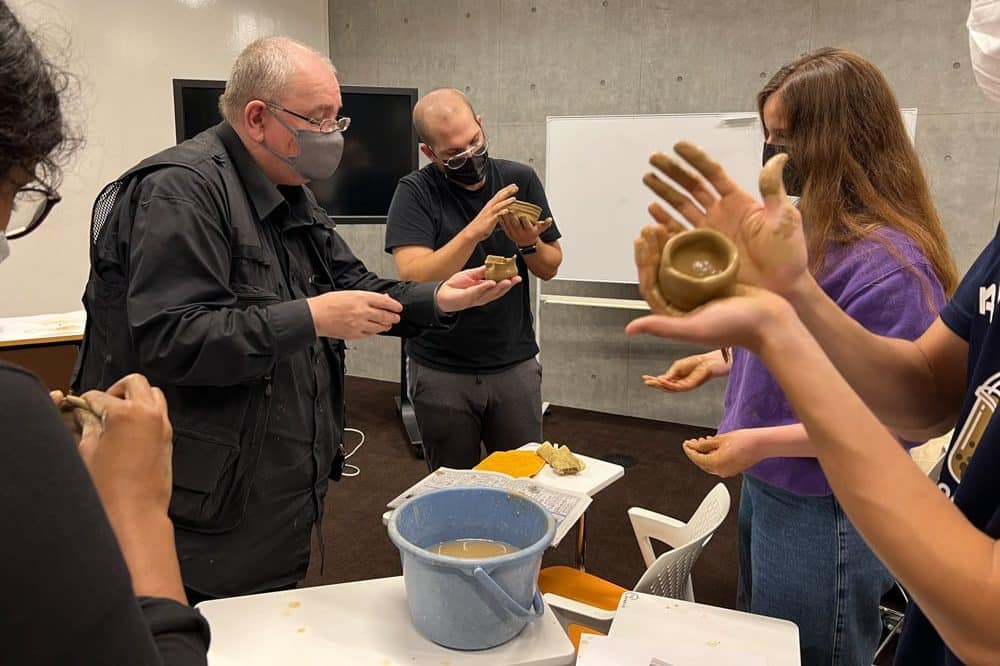
The class plans to present their findings at the upcoming semester-end iCLA event, the Winter Gala.
In the future, Dr. Ashmore wishes to present these findings to Isawa locals to showcase the rich archeological history that exists but is yet to be properly studied. Yamanashi has around 160 important archeological sites, but 500 to 800 lesser known sites that contain the remainders of tombs, temples, battle sites, and so forth. While Yamanashi has several archeological museums housing impressive Jomon pieces that were unearthed within the prefecture, Yamanashi is still often overlooked for more famous prefectures like Nara Prefecture.
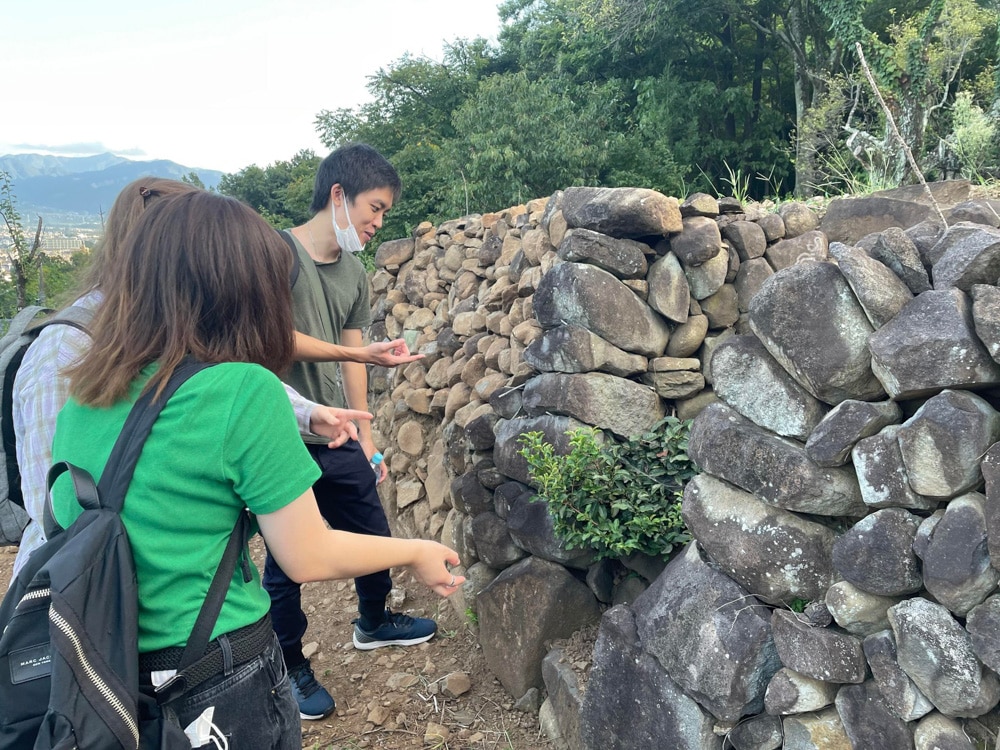
In this course led by Dr. Ashmore, students gain an understanding about Yamanashi folklore and have the exclusive opportunity to study the ancient history of Yamanashi up close through archeological digs and fieldwork.
